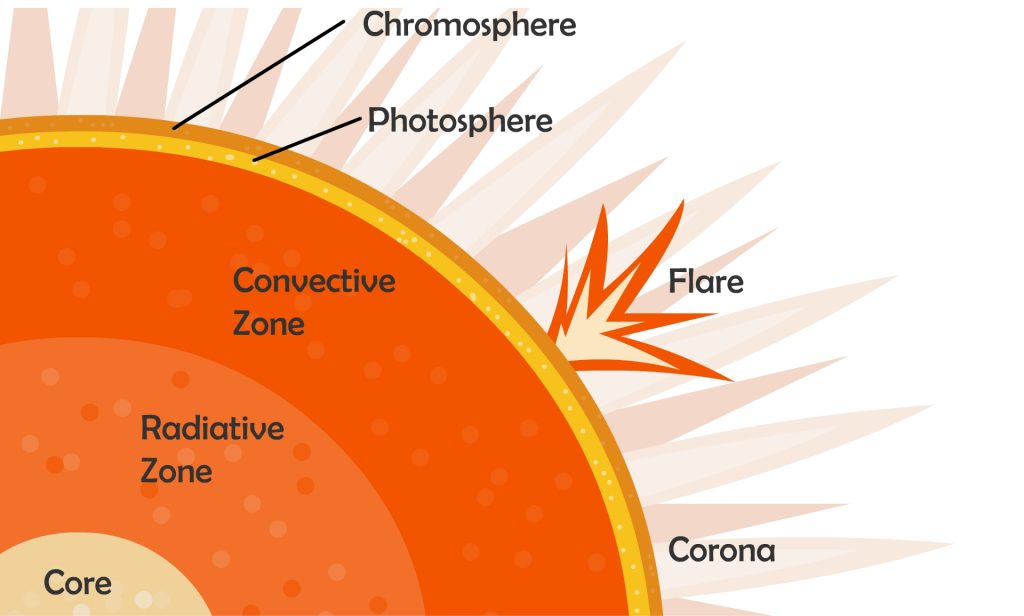Прежде чем рассматривать установку солнечной фотоэлектрической системы, важно понять солнце и его огромный энергетический потенциал.
Солнце — звезда в центре нашей Солнечной системы, превосходящая массу Земли в 330 000 раз и составляющая 99,86% общей массы Солнечной системы. В основном состоит из водорода (73%) и гелия (25%), его фотосфера, где излучается свет, пылает при температуре от 4500 до 6000 К (4230 и 5730 °C). Глубже ядра ядерный синтез происходит при температурах до 1,57×107 К.

Основная анатомия Солнца: Солнце функционирует как колоссальный термоядерный генератор, испускающий огромное количество радиации и фотонов во всех направлениях. Кроме того, его корона, внешняя атмосфера, испускает солнечный ветер со сверхзвуковой скоростью (250–750 км/с). Эта плазма, состоящая из электронов, протонов и альфа-частиц с тепловой энергией 1,5–10 кэВ, способствует возникновению таких явлений, как кометы с хвостами, всегда направленными в сторону от Солнца, и полярные сияния.
Уникальная окружающая среда Земли: Земля, третья планета от Солнца, выделяется в нашей Солнечной системе как процветающий центр жизни. Во многом это связано с защитным щитом магнитосферы Земли и ее плотной атмосферой, которые в совокупности защищают планету от более вредного воздействия Солнца.
Как будущее зеленой энергетики вписывается: В Future Green Energy мы специализируемся на использовании солнечной энергии для создания устойчивых решений. Понимание динамики Солнца имеет основополагающее значение для нашей миссии по созданию надежных солнечных фотоэлектрических систем. Используя эти знания, мы даем возможность домам и предприятиям использовать чистые возобновляемые источники энергии для более светлого и зеленого будущего.

 Monday -Sunday: 8:00 - 24:00
Monday -Sunday: 8:00 - 24:00 No.13 Shang Zhen East RD., Taihe Town Baiyun Area, Guangzhou China
No.13 Shang Zhen East RD., Taihe Town Baiyun Area, Guangzhou China info@futuregreenbattery.com
info@futuregreenbattery.com


